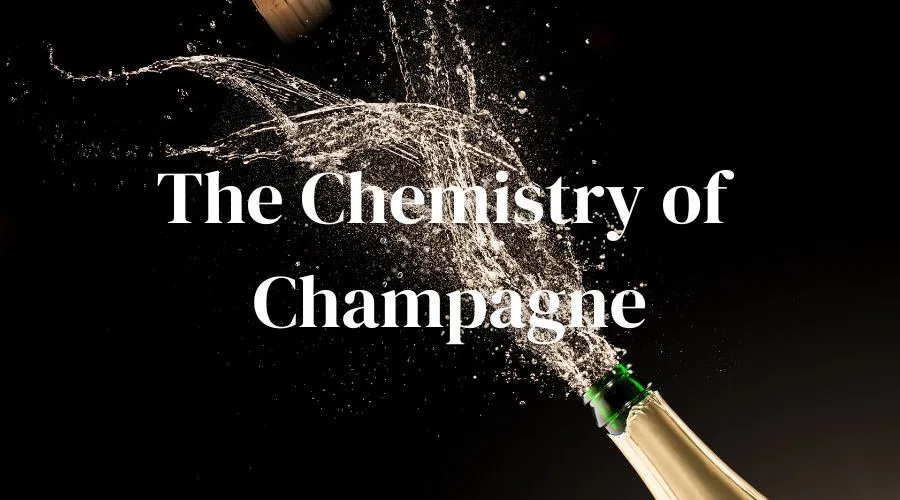
The Chemistry of Wine: Beyond Water and Ethanol
Introduction
Wines are the most fascinating and complex liquids. Water and Ethanol (“alcohol”) comprise the major part of what is in a glass. But all the properties of a wine come from the remaining 2%. Over a thousand compounds, many in microscopic quantities, create all that we smell, taste, see and feel – and in the case of sparkling wines, hear. Everything from sediment to wine diamonds, from the aroma of lychee to the taste of gooseberry, from mouthfeel to astringency, from deep garnet to orange, from cork taint to smoke taint, can be understood through properties of The 2%.
In this talk, we will look at four quite different aspects of wine; beginning with The 98%, followed by Black Pepper, Wildfires and Vanilla & Oak.
The 98% is Water and Ethanol - these have some interesting properties worth discussing before moving on, for the long haul, to The 2%. Black Pepper is well-known in cool-climate Syrah/Shiraz wines. The compound responsible was discovered in wine before isolation from black pepper itself. Wildfires have a curious effect on grapes linked to how volatiles are locked up during the growth of the fruit. The result was first described as “smoke coming from inside the grapes”. Vanilla is a dominant feature in wines kept in oak. Where it comes from is quite unexpected.
About the speaker
John Manley came to Bristol to read Chemistry. This was followed by a PhD in Quantum Chemistry. During post-doctoral positions he transitioned to Artificial Intelligence in the early 1980s, working on Computer Speech Recognition. After 28 years at Hewlett-Packard’s European Research Labs, where his groups were involved in large- and massive-scale systems research, he retired as Laboratory Director of Cloud Computing. During this time he served on the Grid Advisory Group at CERN, the Science City Bristol Board, the EngineShed Advisory Board, the UoB Quantum Photonics Advisory Board, VentureFest Advisory Board and the DTi Grid Working Group. He was Chair of the International Advisory Board for the Smart Internet Lab. He was a Trustee of the University of Bristol for nine years, serving also as the Chair of the University IT Committee, Vice-Chair of the Audit Committee. He is a Visiting Professor at the University of the West of England, Bristol.
In 2020 he was Her Majesty’s High Sheriff of the County of City of Bristol – following this year he created AskingBristol, which is exploring how to “level-up” the Third Sector based on cities and regions. In a return to his roots in Chemistry, he has started a (long) series of talks on the Chemistry of Wine – hoping to reignite some interest in Chemistry for those who left it behind 1 to 80 years ago and at the same time explaining some of the endlessly fascinating and curious things about wine. Most explanations end up in the Chemistry, sometimes providing answers that are different from what we think we know. He and his wife, Jane, a Consultant Dermatologist, are co-owners of a vineyard in Vergisson producing Pouilly Fuisse and Macon Villages wines.
Timestamp
Introduction to the Webinar (00:00)
The host welcomes attendees and introduces John Manley, highlighting his impressive background.
Overview of Wine Chemistry (00:01)
John Manley begins discussing the complexity of wine and its chemical underpinnings.
The 98% of Wine (00:02)
Explains that 98% of wine consists of water and ethanol, with 2% containing over a thousand compounds.
Properties of Water (00:04)
John discusses the unique properties of water and its essential role in life and wine.
Isotopes of Water (00:07)
Explains the different isotopes of water and their importance in wine forensics.
Alcohol in Wine (00:09)
Details ethanol as the primary alcohol in wine, discussing its structure and properties.
Methanol in Wine (00:11)
Covers the presence of methanol in wine and its potential dangers when consumed in large amounts.
Polyols in Wine (00:14)
Discusses the role of polyols like glycerol in wine, contributing to mouthfeel and sweetness.
Black Pepper Aroma (00:17)
Explains how certain wines, particularly cool climate Shiraz, exhibit black pepper aromas from grape skins.
Volatile Compounds in Grapes (00:21)
Describes how grapes lock up volatile compounds and release them during fermentation for aroma.
Impact of Wildfires on Wine (00:24)
Discusses how smoke from wildfires can taint grapes and affect the flavor of wines.
Smoke Taint in Wine (00:26)
Discussion on how smoke taint affects wine, its economic impact, and the chemical processes involved.
Vanilla and Oak Influence (00:27)
Exploration of how oak aging imparts vanilla flavors to wine and the chemistry behind it.
Understanding Lignin and Vanillin (00:29)
Explanation of lignin's role in oak and how it decomposes to release vanillin into wine.
Toasting Process and Flavor Development (00:32)
Impact of barrel toasting on flavor compounds in wine, including vanilla and other aromatic notes.
Wine and Vanilla Flavoring (00:35)
Discussion on the trend of adding vanilla flavoring to wines and its implications.
Future Topics in Wine Chemistry (00:36)
Overview of upcoming presentations and topics related to wine chemistry.
Distillation and Ethanol Questions (00:39)
Clarification on distillation processes and the challenges of achieving pure ethanol.
Yeast Role in Wine Flavor (00:42)
Insights on how yeast affects flavor extraction during fermentation and maceration.
Charcoal Filtration Effects (00:43)
Discussion on the effectiveness of charcoal filtration in reducing smoke taint in wine.
Minerality in Wine (00:45)
Exploration of the concept of minerality, its subjective nature, and its relation to wine perception.
Riesling and Kerosene Flavor (00:49)
Discussion on how Riesling develops flavors, particularly the kerosene note linked to beta carotene.
Volatile Compounds Explained (00:50)
Definition of volatile compounds and their role in the aroma and taste of wine.
Soil and Wine Acidity (00:51)
Explanation of how alkaline soils can produce acidic wines through grape metabolic processes.
Conclusion and Wrap-Up (00:52)
Closing remarks and appreciation for John Manley's insights, inviting future discussions.


